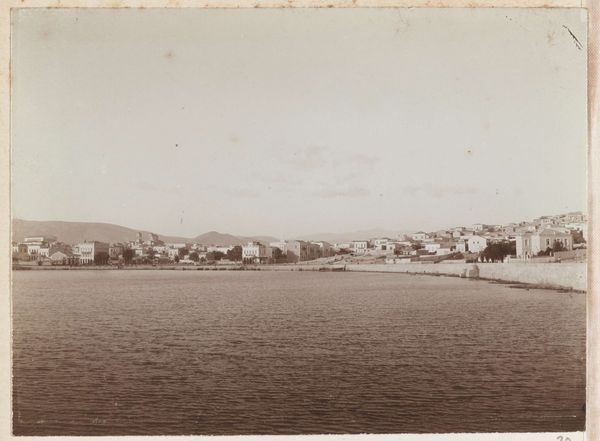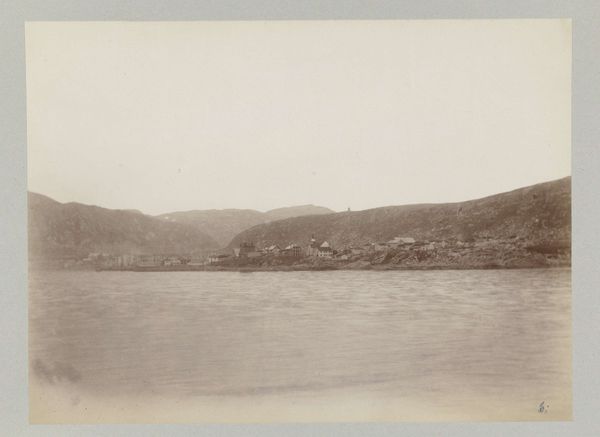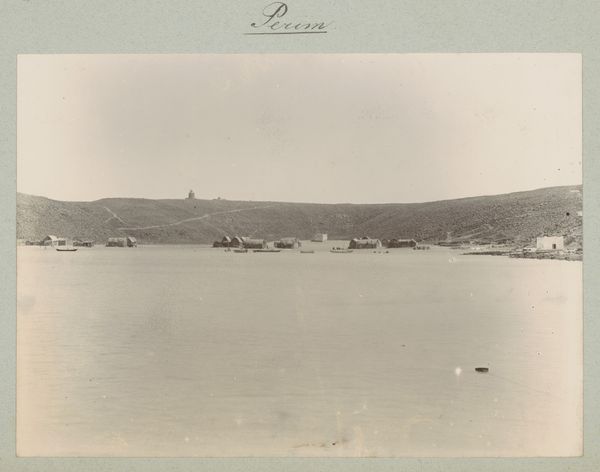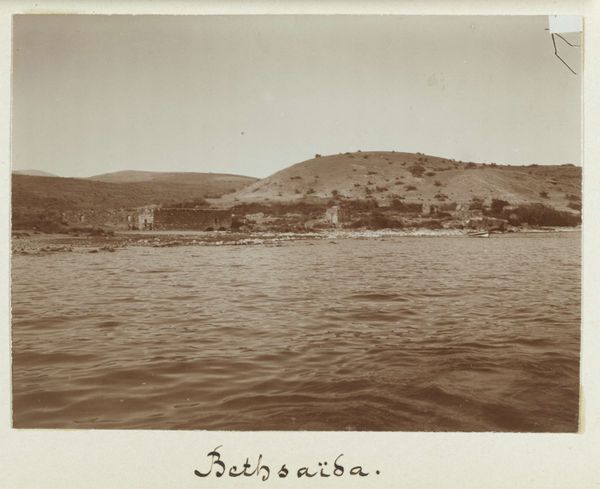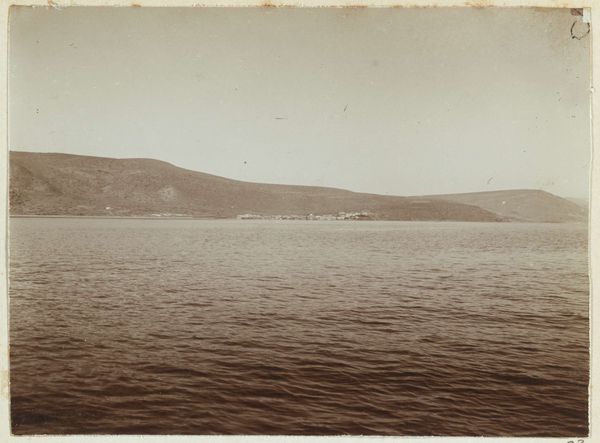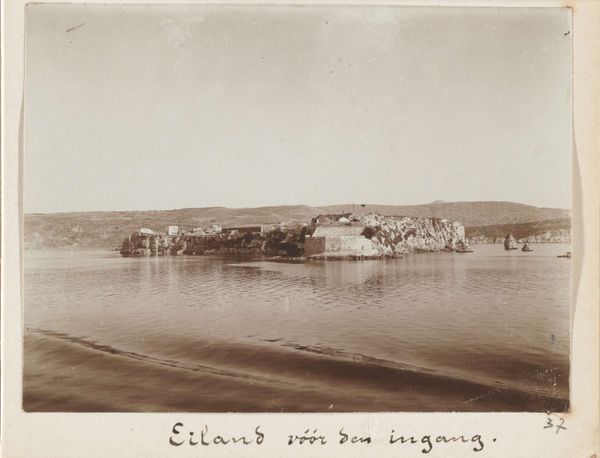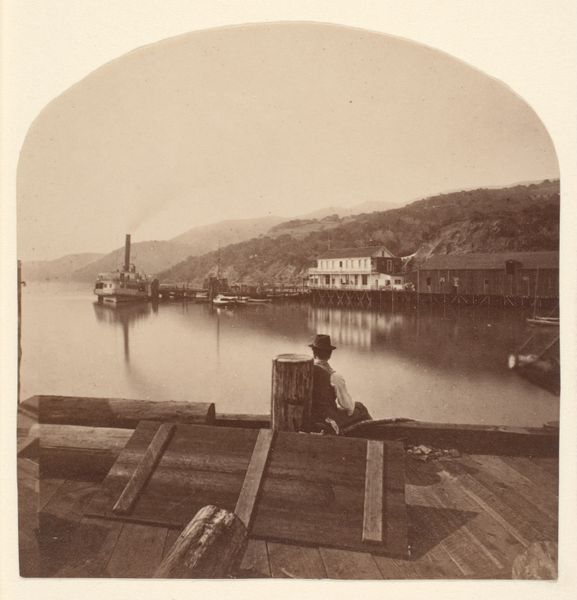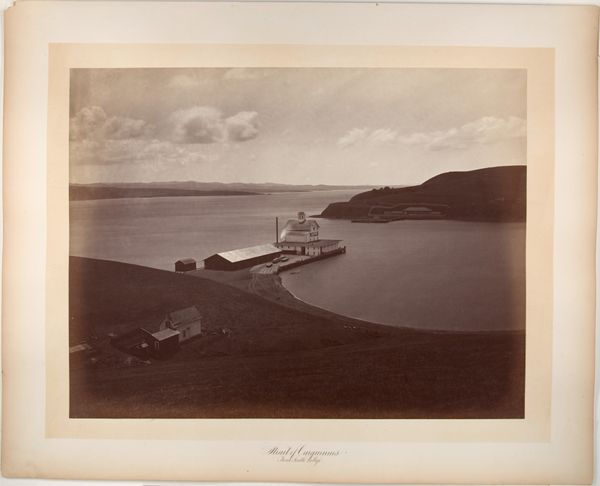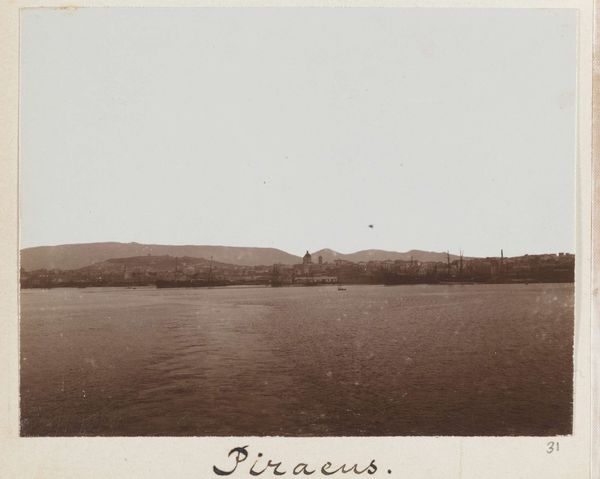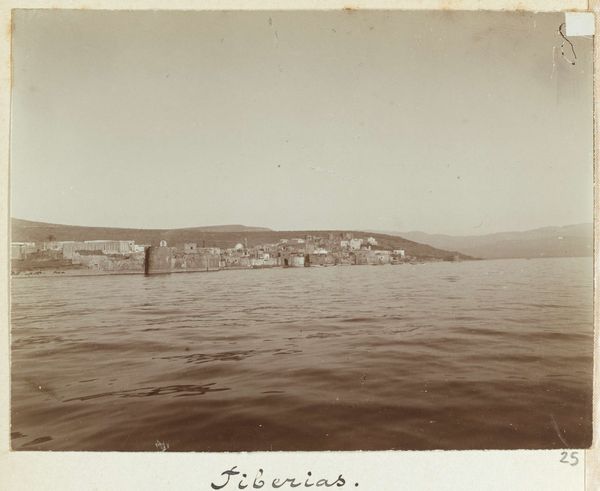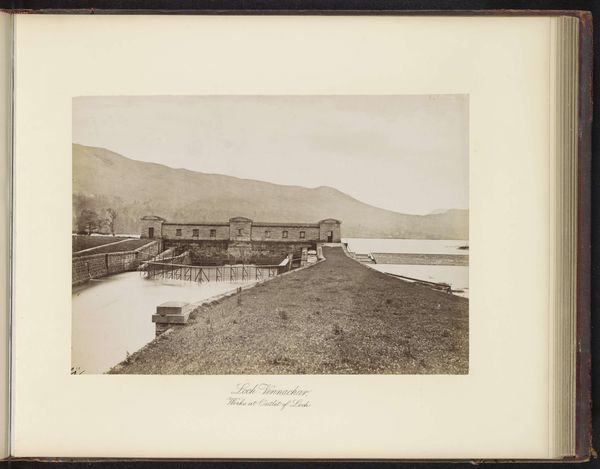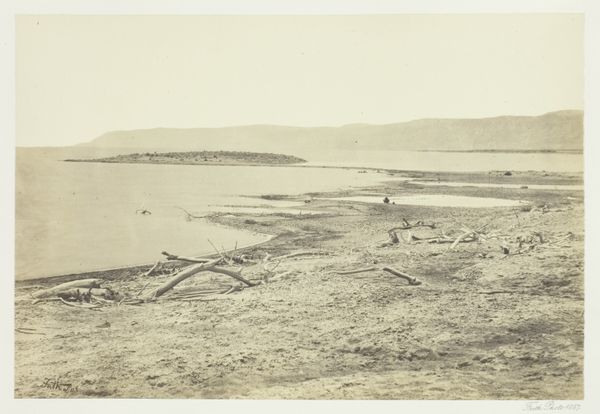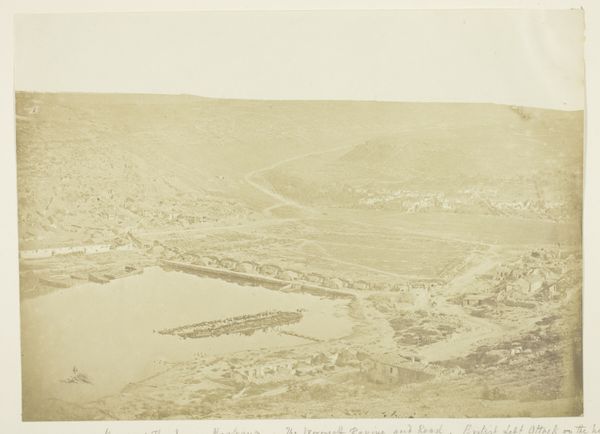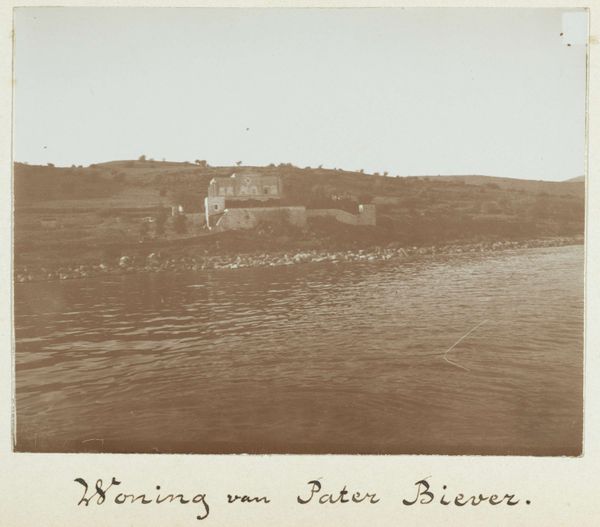
photography, albumen-print
#
lake
#
water colours
#
landscape
#
photography
#
watercolor
#
albumen-print
Dimensions: height 81 mm, width 109 mm
Copyright: Rijks Museum: Open Domain
Editor: So, here we have Johannes Lodewijk Heldring's "Gezicht op Kafarnaüm aan het meer van Tiberias," which translates to "View of Capernaum on the Sea of Galilee," created around 1898. It's an albumen print – a photograph. The tones are beautifully muted. It’s hard to believe this image is nearly 130 years old! How do you interpret the work considering its historical context? Curator: The power of this image rests in how it depicts a site of great religious significance during a time of intense colonial and archaeological interest in the Holy Land. Heldring, by choosing photography, then a relatively new medium, engages in the visual construction of place. He offers what appears to be objective documentation. Editor: Objective? It feels very…composed. Curator: Precisely. Think about the political implications: photography, used by Europeans, shaped Western perceptions and claims on this region. This image isn’t just a snapshot. It's a carefully framed view, literally imposing a certain gaze upon Capernaum. Editor: So, you're saying even what looks like a simple landscape carries a lot of… baggage? Curator: Exactly! Consider who had access to photography, and whose stories were being told – or, more accurately, sold – through these images. The serenity might mask the complex power dynamics at play. It invites us to question what is shown, and, perhaps more importantly, what remains unseen. Editor: That makes me think about the perspective of the local population at the time this photograph was taken. I definitely look at this very differently now. Thank you! Curator: It is rewarding to consider photographs as social and political texts, not simply neutral documents. It reveals the fascinating dialogue between art, power, and history.
Comments
No comments
Be the first to comment and join the conversation on the ultimate creative platform.
